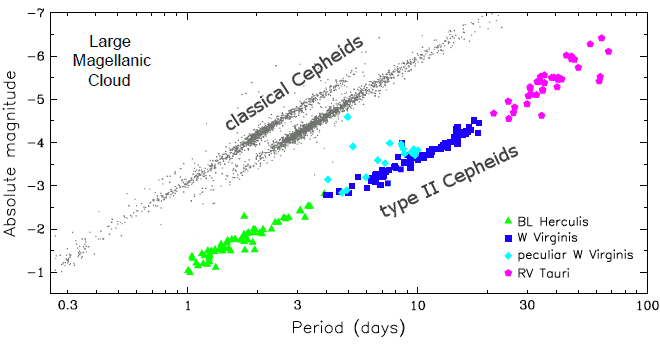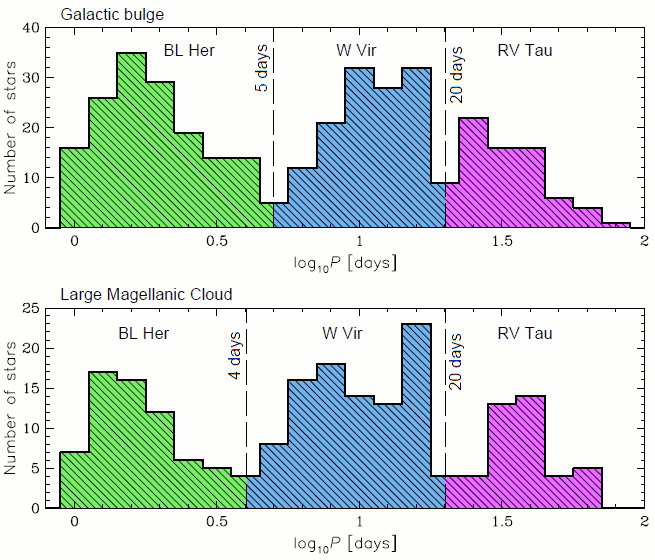Type II Cepheids
Type II Cepheids (sometimes called Population II Cepheids) are low-mass pulsating stars of the intermediate disk or halo population. They were distinguished from classical (type I) Cepheids in 1952 by Walter Baade, who realized that each type of Cepheid follows a different period-luminosity relationship.
 |
Period-luminosity relations of classical (grey points) and type II Cepheids (color symbols) in the Large Magellanic Cloud. As the "luminosity" we used the reddening-free Wesenheit index, defined as WI = I - 1.55(V - I) - DM, where I and V are mean luminosities of Cepheids in these passbands, and DM = 18.5 mag is the distance modulus of the Large Magellanic Cloud. |
Type II Cepheids consist of three subclasses - BL Herculis, W Virginis and RV Tauri stars - each one in a different stage of stellar evolution. The shortest-period BL Herculis stars cross the pulsation instability strip in the HR diagram evolving from the horizontal branch toward the asymptotic giant branch. W Virginis stars cross the instability strip as a result of the helium-shell-flash episodes which occur during the asymptotic giant branch stage. The brightest type II Cepheids are the RV Tauri stars, which cross the instability strip evolving away from the asymptotic giant branch toward the white dwarf domain.
The transition between RR Lyrae stars (horizontal-branch stars) and BL Herculis stars (post-horizontal-branch stars) occurs for the pulsation period of 1 day. As a boundary between BL Herculis and W Virginis stars we adopted a period of 4 days in the Magellanic Clouds and 5 days in the Galactic bulge, since the period distributions of type II Cepheids show local minima for these values. The boundary between W Virginis and RV tauri stars occurs for a period of 20 days.
 |
Period distribution of type II Cepheids in the Galactic bulge and Large Magellanic Clouds. Vertical dashed lines show the boundary periods used to separate BL Herculis, W Virginis and RV Tauri stars. RV Tauri stars are plotted with their "single" periods (interval between successive minima - half of the "formal" period). |
The OGLE project published catalogs containing 357 type II Cepheids in the Galactic bulge (Soszyński et al. 2011, 2013), 203 type II Cepheids in the Large Magellanic Cloud (Soszyński et al. 2008) and 43 type II Cepheids in the Small Magellanic Cloud (Soszyński et al. 2010).
| 